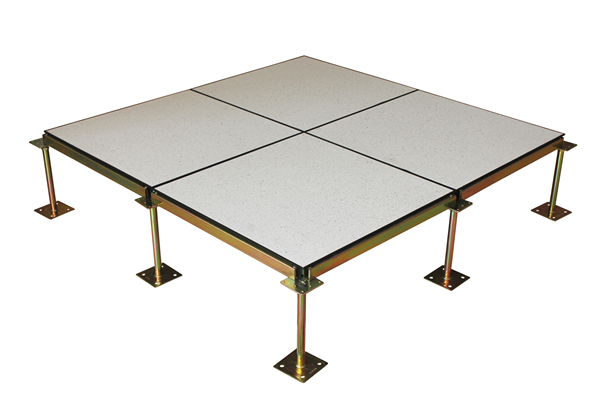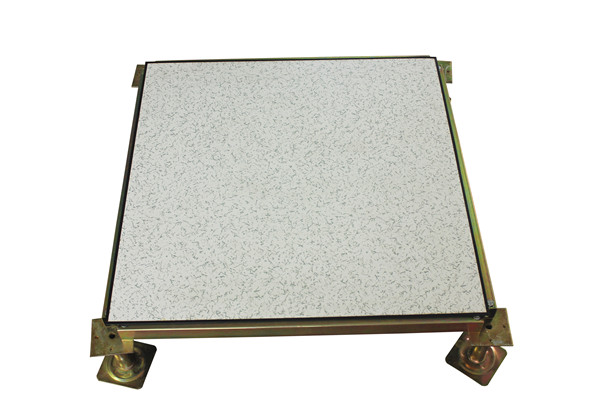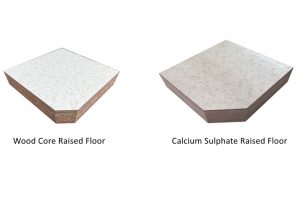First of all, before we choose anti-static raised floor, it is very necessary to acquaint with the condition of equipment in the computer room. After that, we can determine the type and organization of anti-static raised floor system.
When choosing an anti-static raised floor, fully understand the various technical performance of the floor is important. The performance of anti-static raised floor primarily refers to its mechanical and electrical functions.

1.Mechanical properties– one factor we choose anti-static raised floor
(1)Loading capacity
Install the anti-static raised floor on the stringer, and then level the pedestal. The uniform load of anti-static raised floor should greater than 1000kg/m2, the concentrated load on any part of the floor should be more than 300kg. When the load is 300kg on the loading point with a diameter of 150px, the deflection should be less than 2mm without permanent deformation. Besides, the vertical loading capacity of pedestal should be more than 1000kg.
(2)Wear resistance
The floor surface should be wear-resistant, long-term use without wear scar. When the rubber casters of computers and other equipment slide on the floor, there should be no traces of friction and breakage.

2.Electrical functions
Static electricity is our primary factor when we choose anti-static raised floor. It is one of the impacts that can influence the reliable work of computer equipment. When the electrostatic charge exceeds the allowable range, it will cause the fault of the machine and cause a certain psychological insecurity to the staff of the computer room. Therefore, installing the anti-static floor can well prevent the harm of static electricity. There are three main indexes to measure the electrical functions of anti-static raised floor: system resistance, static voltage and surface resistance.
(1)System resistance
The system resistance is the insulation resistance from the surface of the raised floor to the ground. The resistance is the most important index to ensure that the raised floor has good electrical performance. In order to prevent the precipitation of static charge, the system resistance should be 1 × 106 ~ 109 Ω.
(2)Static voltage
It is generally considered that when the temperature is 21 ± 1.5 ℃, and the relative humidity is 30%, the static voltage of the raised floor should be lower than 2500V.
(3)Surface resistance
Usually, most of the customers choose HPL or PVC tile as the raised floor’s veneer. It can ensure the insulation resistance value reach the specified index.





